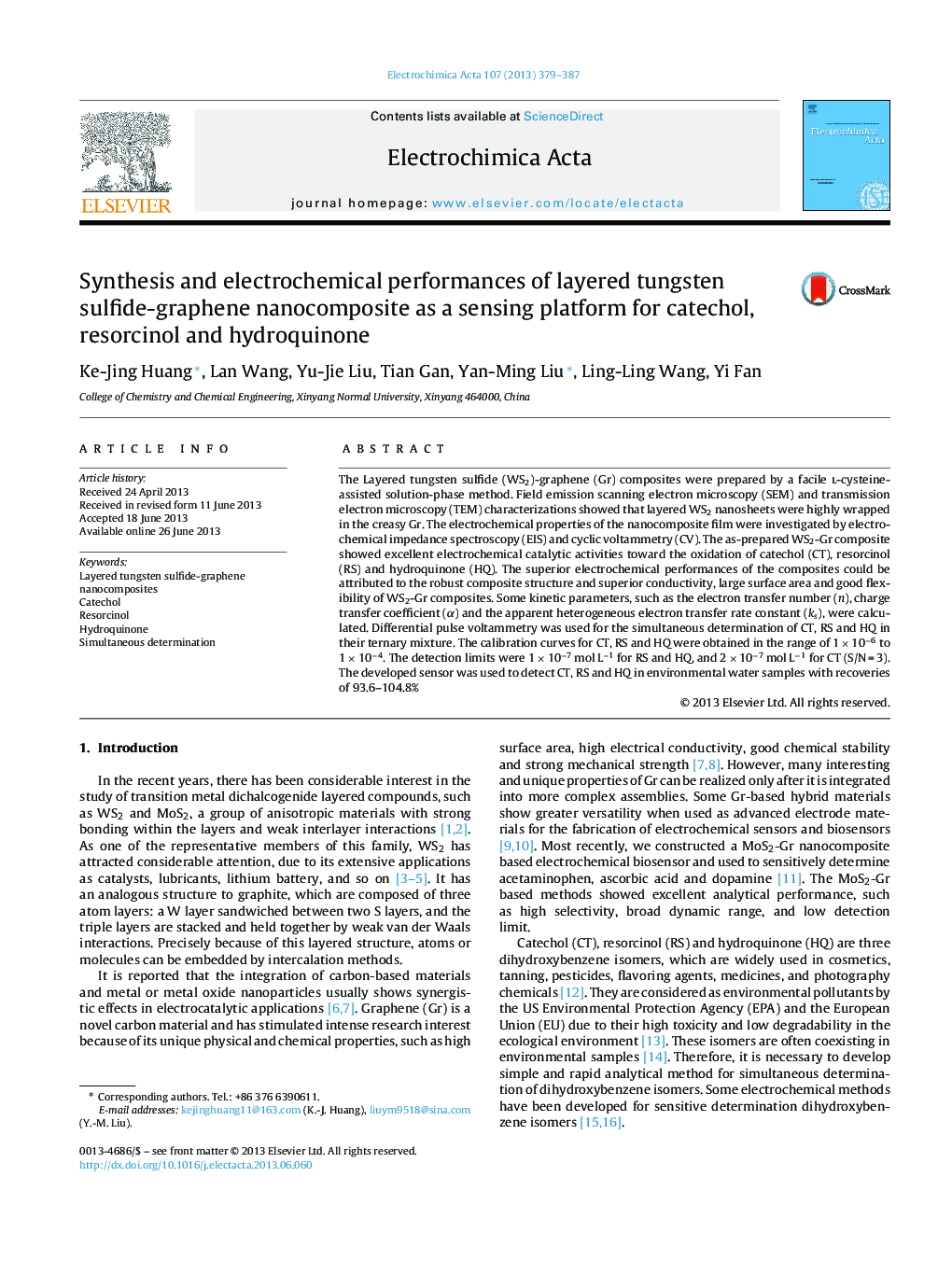| Article ID | Journal | Published Year | Pages | File Type |
|---|---|---|---|---|
| 6616894 | Electrochimica Acta | 2013 | 9 Pages |
Abstract
The Layered tungsten sulfide (WS2)-graphene (Gr) composites were prepared by a facile l-cysteine-assisted solution-phase method. Field emission scanning electron microscopy (SEM) and transmission electron microscopy (TEM) characterizations showed that layered WS2 nanosheets were highly wrapped in the creasy Gr. The electrochemical properties of the nanocomposite film were investigated by electrochemical impedance spectroscopy (EIS) and cyclic voltammetry (CV). The as-prepared WS2-Gr composite showed excellent electrochemical catalytic activities toward the oxidation of catechol (CT), resorcinol (RS) and hydroquinone (HQ). The superior electrochemical performances of the composites could be attributed to the robust composite structure and superior conductivity, large surface area and good flexibility of WS2-Gr composites. Some kinetic parameters, such as the electron transfer number (n), charge transfer coefficient (α) and the apparent heterogeneous electron transfer rate constant (ks), were calculated. Differential pulse voltammetry was used for the simultaneous determination of CT, RS and HQ in their ternary mixture. The calibration curves for CT, RS and HQ were obtained in the range of 1 Ã 10â6 to 1 Ã 10â4. The detection limits were 1 Ã 10â7 mol Lâ1 for RS and HQ, and 2 Ã 10â7 mol Lâ1 for CT (S/N = 3). The developed sensor was used to detect CT, RS and HQ in environmental water samples with recoveries of 93.6-104.8%
Related Topics
Physical Sciences and Engineering
Chemical Engineering
Chemical Engineering (General)
Authors
Ke-Jing Huang, Lan Wang, Yu-Jie Liu, Tian Gan, Yan-Ming Liu, Ling-Ling Wang, Yi Fan,
